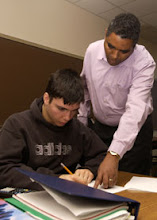Question - How are the following connected: Paul Erdös, C. elegans, Königsberg, Kevin Bacon, and the IRS?
Answer – They are networked together by the notion of networks. The furiously prolific Erdös invented and investigated the properties of random networks in the 1950s; the neural network of the paradigmatic nematode, C. elegans rated a page-one lead in Science Times (NYT 6/20/11); the ur-Mathematician, Leonard Euler proved that the network of bridges in Königsberg could not all be traversed without repetition; Kevin Bacon is the eponymous reference point in measuring degrees of separation in the network of movie actors; the fragility of the IRS hub-and-spoke IT structure of the 1980s appears in a footnote on page 413 of the late David Foster Wallace’s last book, The Pale King (2011).
Plainly, this a trivially connected group, but I’ve been bouncing around among Wallace, Sanjeev Goyal, Nassim Taleb and Francis Fukuyama over the past few months and I hope I’ll be able to explain what I think are some non-trivial links to a coherent picture of America today.
Dr. Lewis C. Sage likes intersections. Since 1991, he has taught Law and Economics, Mathematical Economics, and the Economics of Healthcare. A former Fulbright Fellow (Bulgaria 1995-6), he teaches an interdisciplinary Honors seminar, Enduring Questions, and is studying strategy in the NFL draft with faculty and students in Sports Management and Psychology. E-mail: lsage@bw.edu


